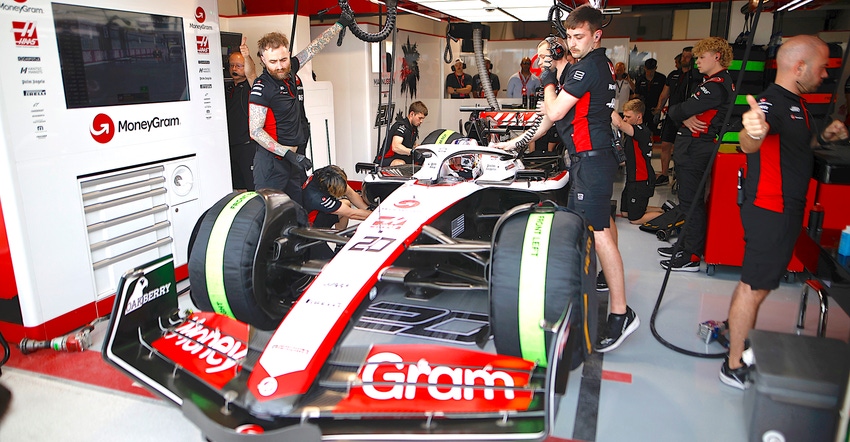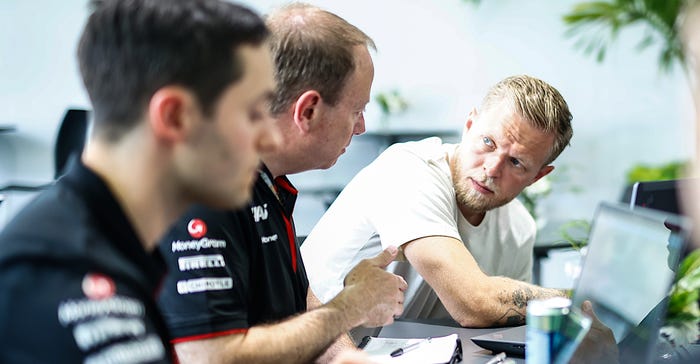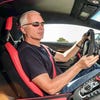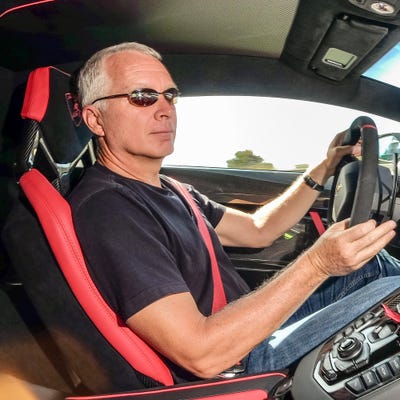What It Is Like Engineering an F1 Car
Haas F1 engineer provides a glimpse inside the job of F1 engineers.

The Netflix Drive to Survive streaming series has brought new levels of attention to the inner workings of Formula One racing teams.
No team has been more in the spotlight than the MoneyGram Haas F1 team, whose charismatic team principal, Gunther Steiner, has won legions of fans for his unvarnished assessments of the team’s successes and failures.
This has naturally cultivated interest from a new generation of engineers, who, after getting a close look inside the teams of F1, are now curious about how to participate professionally.
To provide a look at the route toward engineering for a team like MoneyGram Haas F1, the team provided a chance to hear from Trevor Greensmith, performance engineer for driver Kevin Magnussen, to answer some questions about his job and the experience of working in F1.
Q: How did you get into F1 and did your career start in F1?
Trevor Greensmith: After high school, I was an apprentice in a restoration shop that worked on historic race cars and then I went to a university for motorsport engineering. During that time I was also freelancing for smaller teams as an engineer. When I graduated, I went to IndyCar as a systems engineer then as a performance engineer and then I came here, so I did not start my career in F1.

Q: What's the transition been like from IndyCar to F1?
Trevor Greensmith: Coming from IndyCar to F1 kind of like drinking from a fire hose. It's very, very different on many levels there's a ton to learn for sure, but luckily the same laws of physics still apply everywhere.
Q: What are the principal areas you manage as a performance engineer?
Trevor Greensmith: Well, obviously, car performance. But that's through car setup so both mechanical and aerodynamic car setup. I work with the race engineer, controls engineer, driver, and various departments to try and home in on a setup that extracts the most possible performance from the car for a given track. Obviously while also taking care of tires and staying reliable and legal.
Q: What does your day look like at the track?
Trevor Greensmith: After we arrive at the track typically, for example, on a Friday, we'll have a meeting to discuss objectives and plans for the day, and then throughout free practices one and two we'll test various items and changes on the car to try and help us determine our best setup and compromises for qualifying and in the race. We'll come together after those sessions with the trackside and factory groups and try and bring all of our ideas and analysis together and get the optimal setup on the car during a race.
Q: How much can you change in setup to maximize performance in real time?
Trevor Greensmith: Not a lot. We're in parc ferme at the start of qualifying so we can't make mechanical changes to the car. The only things we can change during the race are front wing angle and some limited control systems and power unit settings.
Q: Which racetrack has the best team garages and paddock area?
Trevor Greensmith: I would say either Bahrain or Miami for the paddock and garages and probably Spa and Monaco for the views.
Q: What's the most stressful weekend you've had yet?
Trevor Greensmith: I would say probably my first weekend doing this job.
Q: How long is your lunch hour?
Trevor Greensmith: One hour at the factory and usually zero hours at the track
Q: What are some good ways for engineering students to enter the motorsport world?
Trevor Greensmith: It's hard. Experience is key. Getting your foot in the door is hard and just trying to find any opportunity to get in on the engineering side with either a supplier, a manufacturer, with a small team in a junior formula, just wherever you can get in and get experience.
Q: How many days are you out traveling during the season?
Trevor Greensmith: I think it's probably around 150 days a year of travel. When the races are not back-to-back then there's usually some time off in between.
About the Author(s)
You May Also Like


.jpg?width=300&auto=webp&quality=80&disable=upscale)


